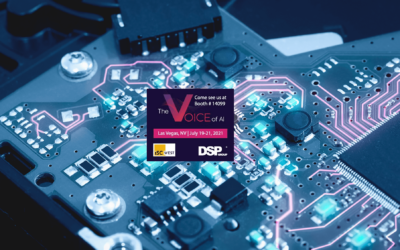Miniaturization of IoT
More battery life and smaller IoT devices are resulting in optimized performance, and our team is excited to partner and lead.
In this digital era, as we wirelessly connect more and more devices to the Internet, researchers and engineers face several challenges, like how to package a radio transmitter into their existing device real estate, how to make increasingly smaller devices, how to reduce the area coverage for mounting chips. They are also striving to meet consumer demand for Internet of Things (IoT) products that are ergonomically easy to use.
Ideally, engineers would tend to use IoT components that are smaller in size, have better RF performance, and have reasonable prices. However, these characteristics do not usually converge in IoT component offerings, and that presents a challenge for solution providers.
Fortunately, the size of a silicon die has been getting smaller and smaller over the years as the industry adopts new silicon manufacturing processes. The industry has been solving the space issue for IoT implementations by combining the MCU and RF frontend into system-on-chip (SoC) configurations.
The demand for embedded SIM (eSIM) is steadily rising among the smartphone manufacturers, laptop manufacturers, energy & utility sector companies. The OEMs across the globe are focusing on the development and integration of eSIM in numerous applications.
The increasing demand for miniaturization of IoT components across various industries is also boosting the demand for eSIM globally.
In 2018, researchers from the Green IC group at the National University of Singapore (NUS) in collaboration with associate professor Paolo Crovetti from the Polytechnic University of Turin in Italy created the timer, that trigger sensor to perform their tasks when required, is believed to be so efficient that it runs using an on-chip solar cell with a diameter close to that of a human hair. This is a major step in IoT miniaturization claimed with low-power.
The wake-up timer can continue operations even when a battery is not available and with very little ambient power, as demonstrated by a miniaturized on-chip solar cell exposed to moonlight. An on-chip capacitor used for slow and infrequent wake-up also helps reduce the device’s silicon manufacturing cost thanks to its small surface area of 49 microns on both sides.
IoT sensor nodes are individual miniaturized systems containing one or more sensors, as well as circuits for data processing, wireless communication, and power management. To keep power consumption low, they are kept in sleep mode most of the time, and wake-up timers are used to trigger the sensors to carry out a task. As they are turned on most of the time, wake-up timers set the minimum power consumption of IoT sensor nodes. They also play a fundamental role in reducing the average power consumption of systems-on-chip.
When designing a hardware module, one of the pressing questions is about Antenna. Developers must work around the space reserved for antenna and the type of antenna they will use to integrate with a corresponding module. PCB trace antennas are general preference because of their low bill of material (BoM) costs. But they require a significant size which can cause devices to be large and difficult to work with.
The smaller size we try to achieve, the less efficiency we can have for the RF performance. Chip antennas are famous for various applications as they simplify design efforts and optimize size consumption.
According to statistics of Bluegiga, approximately only 10 percent of these evaluated designs deploy the external antenna, and 90 percent of the customers choose modules with a built-in chip antenna. Hence, it becomes necessary to continuously evaluate the possibility of space reduction on chipboard, something Cloud of Things has successfully achieved with our latest DeviceTone Genie product line, working with great partners including Nordic Semiconductor and AES with their minIot devices.
Stay tuned for more information on how Cloud of Things and our DeviceTone engineers are working with our partner ecosystem to continually advance smaller form factors with powerful capabilities.
Similar Blogs
The Intelligent Edge Just Got Smarter: DeviceTone’s Full Managed ULE Gateway Meets DSP Group’s ULE Module Empowering IoT Innovation
This week, Cloud of Things will be demonstrating the combination of our DeviceTone fully managed IoT cloud services gateway based on DSPG’s ULE module at the International Security Conference & Exposition, also known as ISC West, which runs from July 19-21 at the Sands Expo in Las Vegas.
DSP Group and Cloud of Things Collaborate to Introduce a Fully Managed IoT Cloud Services Gateway Based on DSP Group’s ULE Module
DSP Group, Inc. (NASDAQ: DSPG), a leading global provider of wireless and voice-processing chipset solutions for converged communications, and Cloud of Things, a developer of solutions around its DeviceToneTM technology that quickly and efficiently make products smart, announced that they will be using the upcoming ISC West trade show in Las Vegas, NV to demonstrate a fully managed Internet of Things (IoT) gateway based on ULE. An enterprise-grade device, the CoT Smart IoT Gateway securely collects sensor and equipment data from the edge of the network for localized or cloud-based analysis, relying on ULE for reliable, interference-free, full-coverage wireless communications throughout the home or office.
Data Integrity and Privacy in Smart Cities: Standardization and Collaboration is Key
According to the United Nations Population Fund, more than half of the world’s population now lives in urban areas, and it is predicted that approximately 66 percent of the world’s population will live in an urban environment by 2050.



